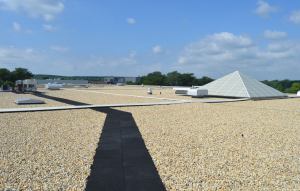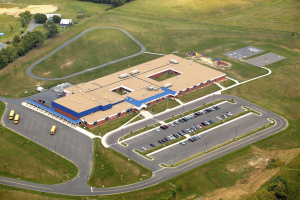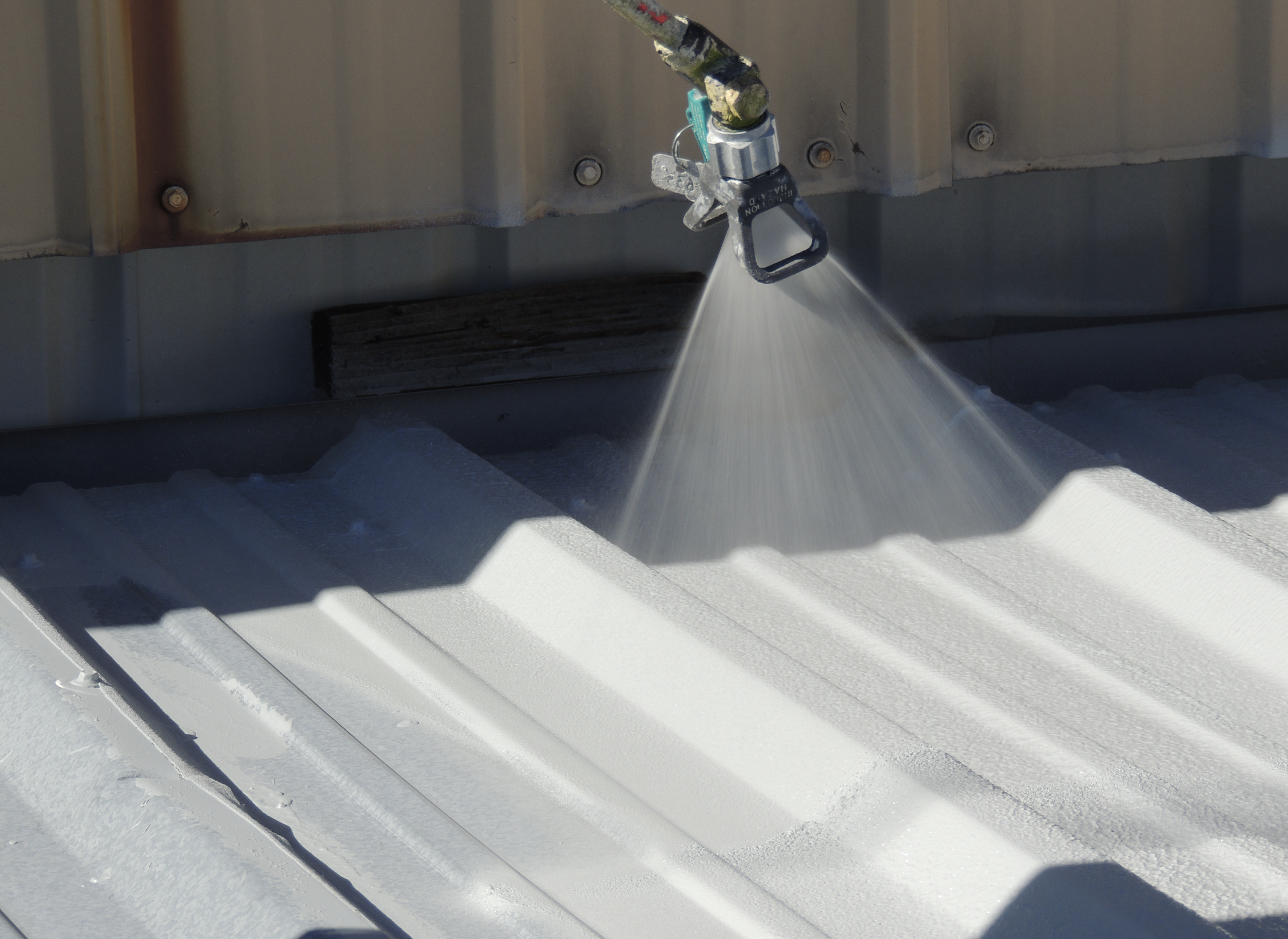In the 2007 study, Desjarlais and his colleagues looked at ballast, measured according to weight per square feet. They also looked at mass and reflectivity of the stones used to ballast the roofing membranes. Since these stones are usually mined as close to the construction site as possible, their reflectivity varies from region to region. In the Chicago area, the ballast tends to be lighter in color than in other parts of the country, which adds to the energy efficiency of the roofing system. Desjarlais points out, “It’s not the main driver, but it helps.”

At ORNL, researchers also tested the effectiveness of coating ballast and used acrylic latex in their study. They found that this was not as effective as other forms of reflective surfaces. PHOTO: Hutchinson Design Group Ltd.
At ORNL, researchers also tested the effectiveness of coating ballast and used acrylic latex in their study. They found that this was not as effective as other forms of reflective surfaces. Because of the rough surface of the ballast, solar radiation is reabsorbed by the multiple radiative hits. The research also revealed another problem: The birds in East Tennessee were attracted by the shiny ballasted roofs and pecked at them, turning them over and limiting their effectiveness.
The ORNL study, performed during a three-year period, conducted side-by-side experiments, comparing different loadings of stone-ballasted roofs and an uncoated paver-ballasted roof with roofs under exposed black and white membranes. Their finding: Ballasted systems perform “as well as white membranes and are deserving of ‘cool roof’ status within the codes.” Since it was first published in 2008, this study has become a landmark turning point in proving the energy-saving qualities of ballasted roofing.
The response led a broad range of code-setting groups to allow ballasted systems as an alternative to reflective roofing. These codes include ASHRAE 90.1, California Title 24 and IBC. In June 2009, the city of Chicago allowed ballasted roof systems as an accepted cool-roofing alternative in its municipal code.
Recent Research
More recent ORNL research adds to the growing evidence that ballasted roofing offers energy-saving benefits. In a paper presented at the 2014 Roofing Envelope Symposium, ORNL reported “… ballasted roofs eliminate the ‘thermal bridging’ of metal fasteners commonly used in ‘cool roof’ systems.”
Based on these ORNL findings, the most recent edition of the NRCA Roofing and Waterproofing Manual estimated a 3 to 8 percent loss in R-value due to mechanical fasteners.

Based on these ORNL findings, the most recent edition of the NRCA Roofing and Waterproofing Manual estimated a 3 to 8 percent loss in R-value due to mechanical fasteners. PHOTO: EPDM Roofing Association
And, earlier this year, the EPA revised its ENERGY STAR website to state: “While the ENERGY STAR program is not structured to apply its label to complete roofing systems, the EPA recognizes that ballasted EPDM roofing systems are a very effective means of significantly lowering the roof top surface temperature similar to reflective roofing products. In studies conducted by Oak Ridge National Laboratories [sic] rooftop temperatures of ballasted EPDM roofs were 30-40% lower than black membranes and are therefore a viable energy saving option for building owners in cooling dominated climates trying to lower their air conditioning costs.” The site also notes: “ballasted EPDM systems are known for their sustainability due to their proven long life cycle, low environmental impact and the recyclable nature of the major components. Ballasted roofs have great aesthetic appeal; eliminate the need for periodic cleaning to retain reflectivity and have well documented resistance to hail damage.”
Desjarlais is gratified the study findings generated by his team are having an impact. And he hopes the industry will continue to work against “one size fits all” prescriptive regulations mandating white roofing. “What we would like to have is the most energy-efficient roof that we can at the lowest cost,” he says. “Part of that answer is being prescribed to us, depending on where we live. The market should be free to create whatever solution it wants so we can offer customers more cost-effective products.




Be the first to comment on "Research Helps Industry Organizations Conclude Ballasted Roofs Provide Energy Savings"